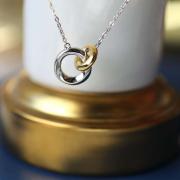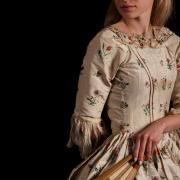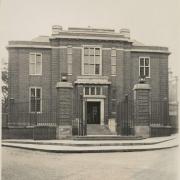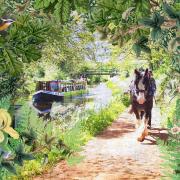The incredible discovery of a photo album containing the portraits of around 100 prisoners has led to a fascinating and rare insight into the lives of North Devon’s Victorian working class.
Angelina Fogt was thought to be around five years old when she appeared before Barnstaple Police Court on June 21, 1875.
The child was from an impoverished family and was actually nine years old, although she looked much younger. She was charged with stealing some sweets and a toy concertina and her punishment was to be held in custody until 7pm. A few days later she was caught stealing some copper coins from a bowl in a shop.
This time she was sentenced to a month in prison followed by three years in a reformatory school in Somerset.
When Angelina left the reformatory she initially went to work in service in Exeter but she ended up being admitted to the city’s workhouse on November 20, 1880. Two weeks later she was found dead in her bed. She suffered from epilepsy and the cause of death was assumed to be suffocation during an epileptic fit.

Angelina’s photograph was taken in Barnstaple Jail and it’s one of a remarkable collection of images of prisoners who were all at the jail between 1867 and 1877.
The portraits are unique, and thought to be the earliest known collection of photographs of working class people in North Devon.
Indeed, there are very few records like this of working class people anywhere in the country; these were not pictures that were commissioned by wealthy Victorians as heirlooms, they were just a record, one that probably would be filed away somewhere in a police station until eventually thrown away.
Photography was a way of registering the identity of offenders. People could commit a subsequent offence and give another, false name to avoid harsher penalties - but faces couldn’t be changed.
The Barnstaple album was discovered by local historian and author Dr Sadru Bhanji in 2009. He’d acquired it from a book dealer and eventually traced its origins back to North Devon.
He says: As all but a handful of the 98 people depicted were named, curiosity was aroused. A fruitful exploration of contemporary sources then followed and made it possible to provide accounts of the subjects’ backgrounds and criminal lives and bring back into awareness forgotten members of one of Victorian Barnstaple’s underclasses.’
Sadru’s research led to detailed accounts in local newspapers of the stories behind these people. As well as the subjects themselves and their crimes, he discovered where they lived, where the offences took place - in the town’s streets, pubs, shops and markets - and who else was involved, including victims, witnesses, police constables and magistrates.
The people’s stories led to links across North Devon and beyond to other parts of the county including Exeter, Torquay, Plymouth, and even further afield to Taunton, Manchester and Birmingham.

Devon historian Dr Todd Gray, has written the foreword to Sadru’s book, published to coincide with an exhibition at the Museum of Barnstaple and North Devon.
‘This is an amazing discovery,’ he says. ‘It is the earliest collection of photos of members of North Devon’s working class. Each girl, boy, woman and man was photographed to provide a record in case they re-offended and a century and a half later they allow us today to gaze at their faces and begin to understand their lives. North Devon’s past has just become a little bit more accessible.’
He adds: ‘The people staring out from these images may well have relatives still living in North Devon, and certain features may have continued through the generations. Are there faces here that look like someone you know?’
Todd notes the ‘strong faces’ looking straight to the camera, ‘the women who look brow beaten and defeated in life’, and the boys who look so modern, and he hopes that the photographs will evoke some empathy for this hidden underclass of North Devon.
He says: ‘Some people may just look at them and see criminals, but these were individuals without a future, with no real chance in life; on the whole they are lost souls.’
‘Some of these cases are really quite tragic,’ he says. ‘I hope seeing these photos brings out the kinder sentiments in all people.’
The exhibition runs until Saturday, February 17.
Barnstaple’s Victorian Underclass: Prisoners’ Photographs, 1867-77 by Sadru Bhanji is published by The Mint Press, £15. stevensbooks.co.uk
Stealing a pair of shoes

Charles and Isabella Harris and William Densham are described as tramps in the album. They appeared before magistrates on January 13, 1869, charged with two offences, a burglary at Tapeley Lodge and the theft of a pair of shoes from Mr Blackmore’s shop in Barnstaple. The burglary charge was dismissed due to a lack of evidence but for the theft, the men were sentenced to three months in jail with hard labour and Isabella was sentenced to two months’ imprisonment.
Riotous and drunken behaviour

William Horne came from a respected Barnstaple family but William Horne, a shipwright, fell on hard times. A head injury following a fall in 1862 meant even modest amounts of alcohol had an adverse effect on his behaviour. Over the years, beginning in 1864 when he pleaded guilty to stealing two candlesticks, he received several prison sentences, hard labour and fines for various thefts and ‘riotous and drunken behaviour’.
At the age of 40 in April 1875, he pleaded guilty to stealing a pestle and mortar from George Boyle’s public house, the Red Lion. He was given a 12-month prison sentence, followed by three years of police supervision.
Teenager caught stealing

Fourteen-year-old housemaid Elizabeth Passmore pleaded guilty to the theft of 8s 6d from her employers, Mr and Mrs Stevens, at the Barnstaple Police Court on June 9, 1873. She was sentenced to a month in prison with hard labour, to be followed by five years at a reformatory.
A bag of oats

Bideford’s William Oke, a former post-boy at the New Inn, and William Blight, landlord of the Torridge Inn appeared before their town’s magistrates on February 5, 1877, both pleading not guilty to the theft of a bag of oats worth 1s, belonging to Henry Ascott, landlord of the New Inn.
Apparently, William (pictured) had left a small bag of corn by the door of the coach house near the Torridge Inn which had been picked up by Blight – to feed his horse, in return for 6d and two glasses of beer.
Both men were found guilty and received a sentence of one month’s imprisonment with hard labour.




























